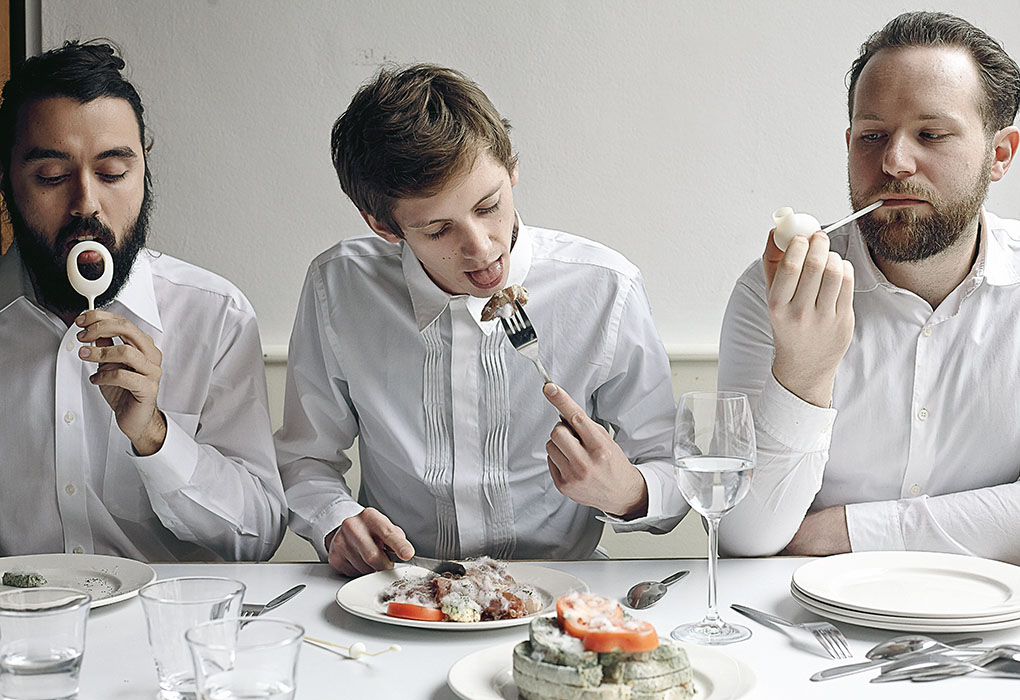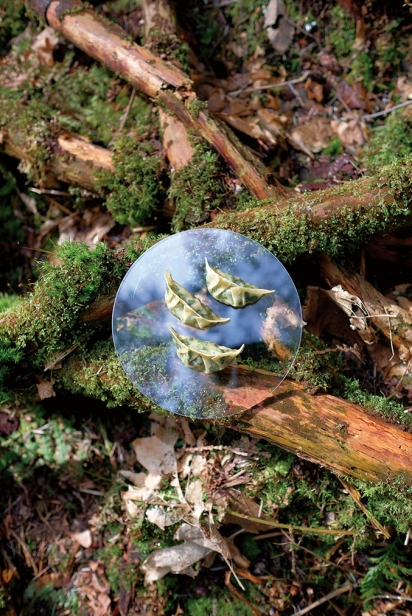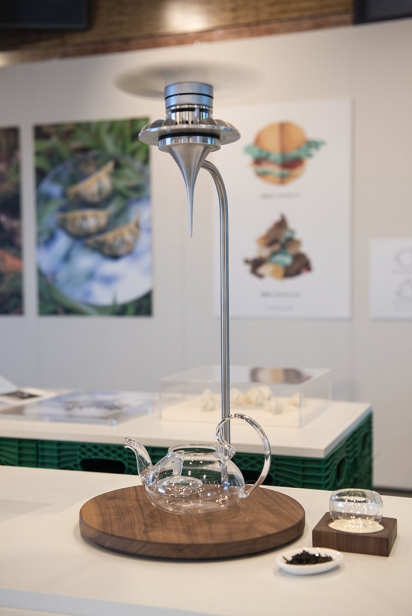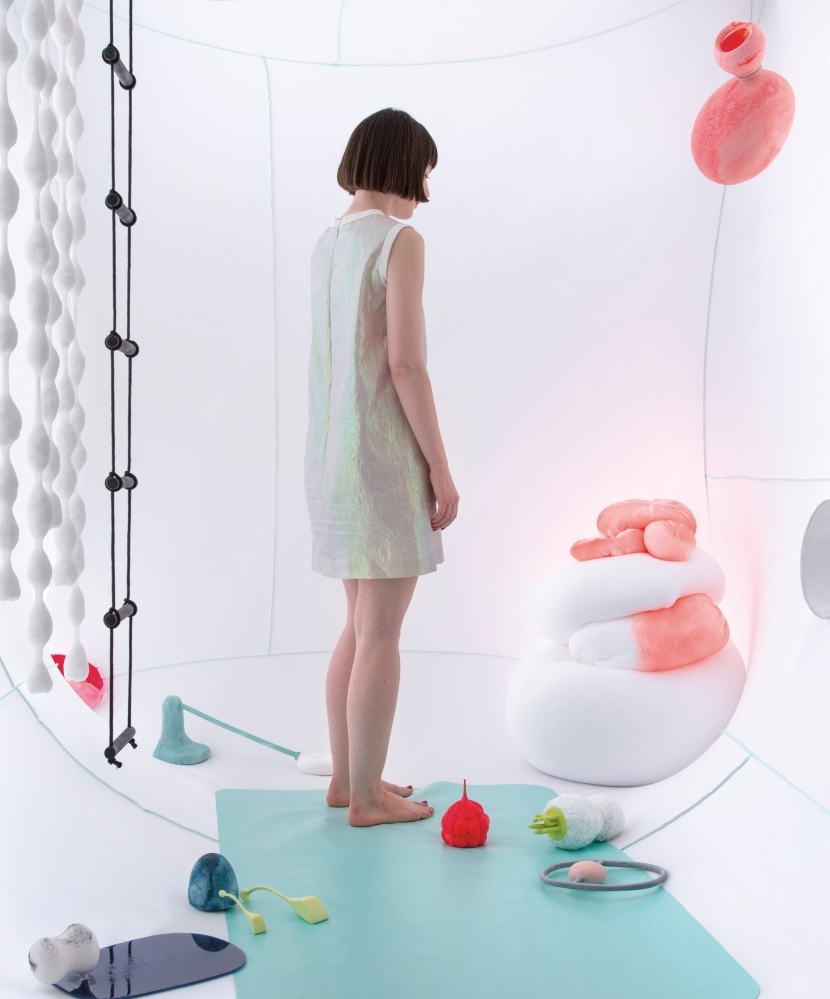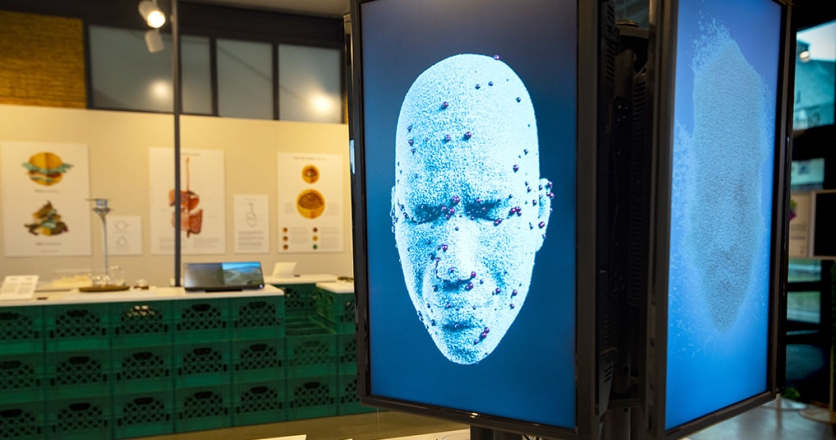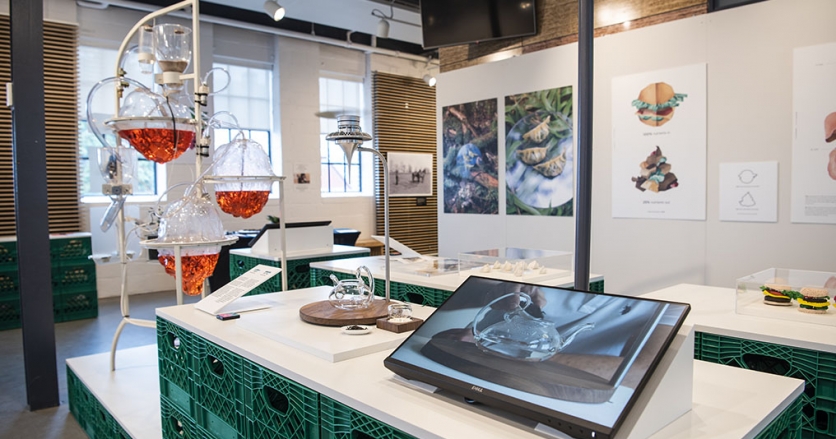Food for Thought — Edible Futures, an exhibition about food design
If an exhibition about food design seems too esoteric for you — after all, food is food, right? — consider the Pringle. The ubiquitous potato chip, which looks sort of like the top half of Donald Duck’s beak turned upside down, is a wonder of industrial-level design.
“Someone had to design that, model it and have the mould made for manufacturing. They take into consideration texture, size and efficient packaging,” says Amanda Huynh, a Canadian artist-cum-food designer whose work is included in an exhibition of conceptual art and food design now showing at the Canadian Agriculture and Food Museum in Ottawa. “Designing food, food packaging and food experiences is the only way we can change our attitudes about what we eat,” Hunyh says.
The exhibition is titled Edible Futures and its raison d’être can be summed up in that one line, to “change our attitudes about what we eat.” The exhibition is not preachy, rather it seeks to create an “an a-ha moment with the public,” says museum director Kerry-Leigh Burchill.
“As a museum, we take the role very seriously that it’s not up to us to tell people what they should or should not be eating or consuming as agricultural products,” Burchill says, “but we should absolutely feel that we have a role in making sure that people have the information to make educated choices.”
The exhibit offers up information with healthy servings of imagination, from 13 artists and food designers from around the world who, in this outing at least, skirt the borders between art and design and science. They look at the future of food design and how it can influence our relationship with food to make that relationship while keeping ourselves, and the planet, healthy.
One needn’t subscribe to more-people-than-food doomsday scenarios, à la Thomas Malthus or Paul Ehrlich, to recognize that our relationship with what and how we eat needs to change. Even if we could, in a perfect world, produce enough food for an ever-increasing human population, the inescapable fact is that we don’t live in a perfect world — or, more to the point, we seem determined to make a perfect world imperfect through environmental degradation. If we’re to have an environment healthy enough to grow and produce food, we have to collectively rethink not only how we produce that food, but also how we consume it and even what we think of as food.
South African artist Hannerie Visser imagines a world where fresh water is so scarce that food is produced from food that could grow in salt water. Visser built a pantry filled with “lettuce ketchup” and “cabbage marshmallows” — which will require some adjustments on ’smores night around the campfire.
Nebraska-born Paul Gong — who bills himself as a “speculative designer” — imagines that food waste inspires people to become “human hyenas,” with modified digestive systems that can digest wasted, rotten food. He’s not suggesting a scavenge around the dumpster; Gong illustrates his scenario with photographs of fine dining, including a nice plating of bread and plump tomatoes that are covered in mould. The accompanying audio guide explains, “Now, after a few generations, this disgust is no longer an issue. In fact, I let some of my food rot on purpose because I prefer the structure of rotten food. And the layers of fungi are a real texture delicacy.”
There are foods made from plastics and spices that could mimic the flavour of strawberries or most anything else. Another installation suggests “digital seasonings,” where flavours would literally be all in the mind. Insects are raised as an alternative source of protein (already common in many parts of the world and making their way into North American grocery stores), and the potential of lichen is also noted. It “could even grow on Mars!” says German artist Julia Schwarz.
The Austrian “cross-disciplinary industrial designer” Alexandra Fruhstorfer asks if we can make invasive species — a growing environmental threat in an increasingly mobile world — into commercially viable food, while protecting native species and environmental stability.
Visitors can move through the exhibit with audio guides and choose between dialogues from consumer or producer. Huyhn’s installation is titled Diasporic Dumplings, and foresees a world in which “kitchens were removed from houses in an attempt to achieve human equality and resource efficiency,” a consumer explains. “Since then, we all eatdumplings. Don’tthink, though, that all dumplings are the same. Every community receives its own dumplings made with local ingredients. And the shapes of the dumplings have symbolic meanings, conveying messages about politics and resistance to oppressive government. There’s even dumpling slang with meanings hidden in every fold made of these tiny pastries.”
Huyhn “briefly considered attend-ing culinary school” before she studied food design in Milan, Italy, and started to teach at Emily Carr University of Art + Design in British Columbia. “Working with food makes topics more universally understood, and allows us to address deeper issues,” she says. She talks about her students looking at how gentrification was affecting culture in Vancouver’s Chinatown, and “being able to approach it through the food” helped them to understand the “nuanced issue.”
Visser agrees that food designers can help to influence public ideas about food. “We can shine a light on serious issues in the food system and get people to think differently about things and to start a conversation about issues,” says Visser, who found the inspiration for her project during a drought in South Africa.
Netherlands-based Shaakira Jassat also found inspiration in local experience when she visited her home in Cape Town during a drought and saw people’s taps periodically turned off to conserve water.
“After … returning to the Netherlands, I began my own personal research trying to harvest my own water from steamy showers and frosted dew on winter mornings,” Jassat says. “I tried to imagine how the people in my country endured a life without the tap during the drought period.” In the exhibition, her Tea Drop machine is designed to make tea by condensing water vapour from the atmosphere, with the byproduct of conversations “around our water use on a domestic, urban and well as industrial level.”
Food waste is a big part of the exhibition, and not just in what we throw out: It’s also what we put in.
“We never really consider over-consumption as a source of waste,” explains “critical food designer” Chloe Rutzerveld in her installation, which contemplates the waste lost through ineffective absorption of nutrition in the food we eat.
Then there’s the simple issue of eating too much. (Remember Ottawa’s Alanis Morissette’s 1998 song Thank You — “How ’bout stopping eating when I’m full up”?) Burchill says she was “really struck” by the exhibition’s consideration of waste through the body.
“This installation has changed my perception about food waste, that it’s not only at a house level or a restaurant level or an industry level about what’s thrown out, it’s also about what we humans produce as waste and how much of the waste is going through as unused caloric intake because we just didn’t need it.”
Questions around production and waste are especially acute in the Netherlands, which is the world’s second-largest exporter of value-added agri-products, says ambassador Henk van der Zwan. The exhibition was created by the Dutch Institute of Food & Design and sponsored by the embassy.
“The idea is to incite people to think differently,” the ambassador says. “You’re looking at optimizing production, but also at changing consumer behaviour — it’s a two- pronged approach.”
The ambassador recently hosted Freek van Eijk, CEO of Holland Circular Hotspot, a Dutch organization that works with public and private sectors to encourage a sustainable “circular economy.” Van Eijk says food loss throughout the supply chain “is equivalent to cropland the size of China.
“We are seven billion people and we produce food for 10 billion people,” he says. “One billion people are starving, and two billion people are obese. It’s a strange situation, to say the least.”
The exhibition continues in Ottawa until Sept. 2, and then travels to Vancouver and Toronto.
Canadian Agriculture and Food Museum
901 Prince of Wales Drive, Ottawa
ingeniumcanada.org | 613.991.3044| @ingeniumCanada


